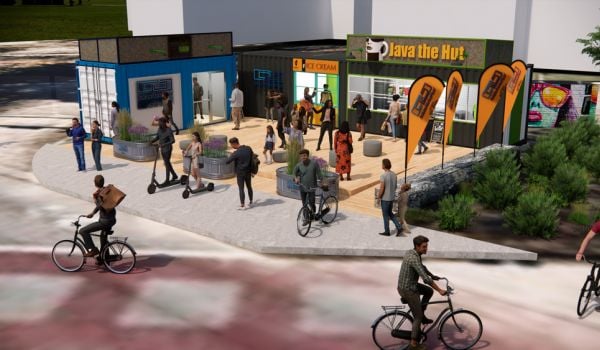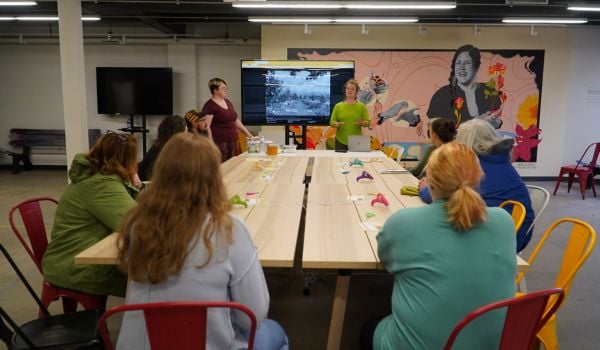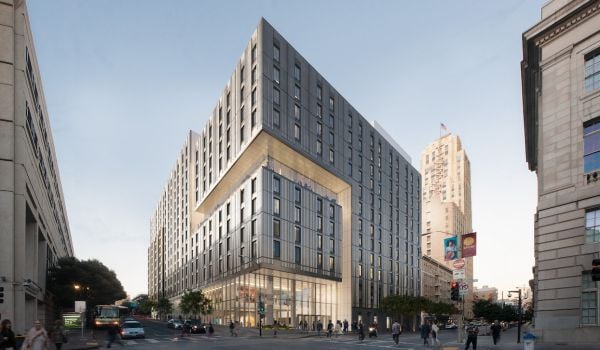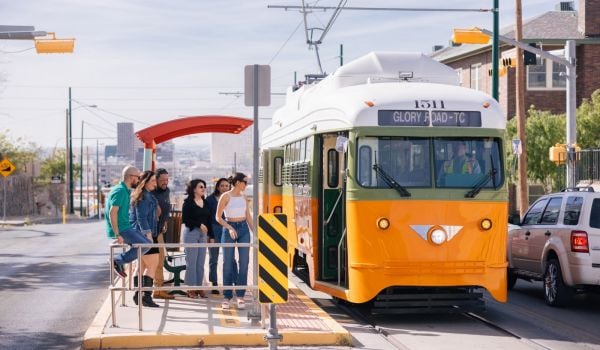If I could sum up my biggest problem with the current discussion around revitalizing and reenergizing our city centers across America, it’s this: too much Facebook, not enough flannel.
I’m talking about that most neglected of demographics, Generation X. When civic innovators talk about revitalizing downtowns, we often talk about attracting and retaining talent. And when we talk about talent, you can be sure that we’re almost always talking about millennials, with occasional references to those highly skilled, empty-nest boomers. Millennials are “desirable” to marketers and to employers. While studies show that both millennials and Gen Xers — Americans born between 1965 and 1980 — are facing significant debt, Gen Xers have nearly six times the debt of our parents, and only 36 percent of us have exceeded our parents’ net worth. Referring to a recent Pew report on Gen X’s shaky financial security, generations expert Neil Howe noted that while millennials still have time to build wealth, “the generation I worry about is Gen Xers.”
If you want a booming city, it seems, don’t go courting Gen X.
But when it comes to building communities, Gen X, the latchkey generation — my generation — is an untapped resource. We trust networks — the neighborhood blocks that raised us — more than we trust hierarchies, and we are skilled builders of invisible infrastructure. Cities readily invest in physical infrastructure, pipes and roads and electrical lines, but the invisible social infrastructure — openness and healthiness in the interactions of the community — is also vital to making a city attractive to talented people, safe to explore at night, a worthy place to raise a family.
My generation’s commitment to community networks is underutilized when it comes to addressing city challenges. We’re a sleeping giant, focused on seeing our communities become better, but unsure how to do it.
We Gen Xers distrust the leaders of traditional hierarchies, which makes us reluctant leaders. In Macon, Georgia, I direct the College Hill Alliance, a community revitalization organization that has helped build up the College Hill Corridor, an area that connects Mercer University with our downtown. We’ve seen several of these reticent Gen X leaders emerge.
Take the case of the Macon Gen Xer whose house sits directly across from a park. He was watching kids drive over the park lawn, sit in their cars and honk their horns. He felt frustrated, but he didn’t call the police, as a boomer might have, or start a Facebook campaign, as a millennial would, because he didn’t think that would accomplish much either. Instead, he began to contact friends and neighbors, and wove together an organization that became the Friends of Tattnall Square Park. They’ve now raised over a million dollars, enough money for real, lasting change in that park — because he got fed up, and knew how to connect with other fed-up people. Like this man, we Gen Xers seek, in our wolf-pack way, to harness our spheres of influence for change, creating a critical mix of talent and ideas.

Heather Pendergast is a Gen Xer who runs a community revitalization organization in Macon, Georgia.
Those models will come from outside the traditional power structure. That’s why efforts to bubble up innovation from the grassroots, like the new Knight Cities Challenge, are important tools of exploration. The challenge asks anyone, anywhere, for their best idea to make 26 communities more vibrant places to live and work. The application is really simple — just two questions long. The value of challenges like these isn’t just in the idea that a great vision gets funded. They invite conversation, and provide a chance for everyone to advocate for the future of their community. Such open processes tap Gen X’s knack for drawing a community around a cause — an ability that’s as critical to the success of cities as a youthful workforce. (Ed. Note: The challenge’s sponsor, the John S. and James L. Knight Foundation, provides funding support to Next City.)
Gen X is smaller than the generations that precede and succeed it, but has much to offer: Gen X settles in for the long run, which affords a city the kind of committed pool of talent that builds parks that last and downtowns that thrive.
I’m not discounting millennials — we need their ideas and their technical savvy, and their propensity to push boundaries. We also need the resources and experience of boomers, who are powerful agents for change. But if we expand our idea of ”talent” to include leveraging the community-building capacity within Gen X, the qualities of all three generations would help cities to thrive.
We are not always good at building a community for the future generation. Our public discussion of improving cities tends to focus on immediate problems and immediate payoffs, which leaves us doing things like cutting taxes to encourage new business, destroying the funding for our schools in the process. If instead we focus on ideas, openness and dialogue, and opportunities for collision and conversation that spark positive discourse, we’ll create new solutions we can’t even envision now.
That’s how we’ll engage Generation X, a forgotten generation, to use its skills and energy and passion for community to make real change. We’ll build the kinds of cities that not only attract talent, but retain it. The kinds of cities where all generations would like to live and work.
Heather Pendergast is executive director of the College Hill Alliance, a community revitalization organization and program of Mercer University in Macon, Georgia funded by the John S. and James L. Knight Foundation. She is also a proud member of Generation X.















